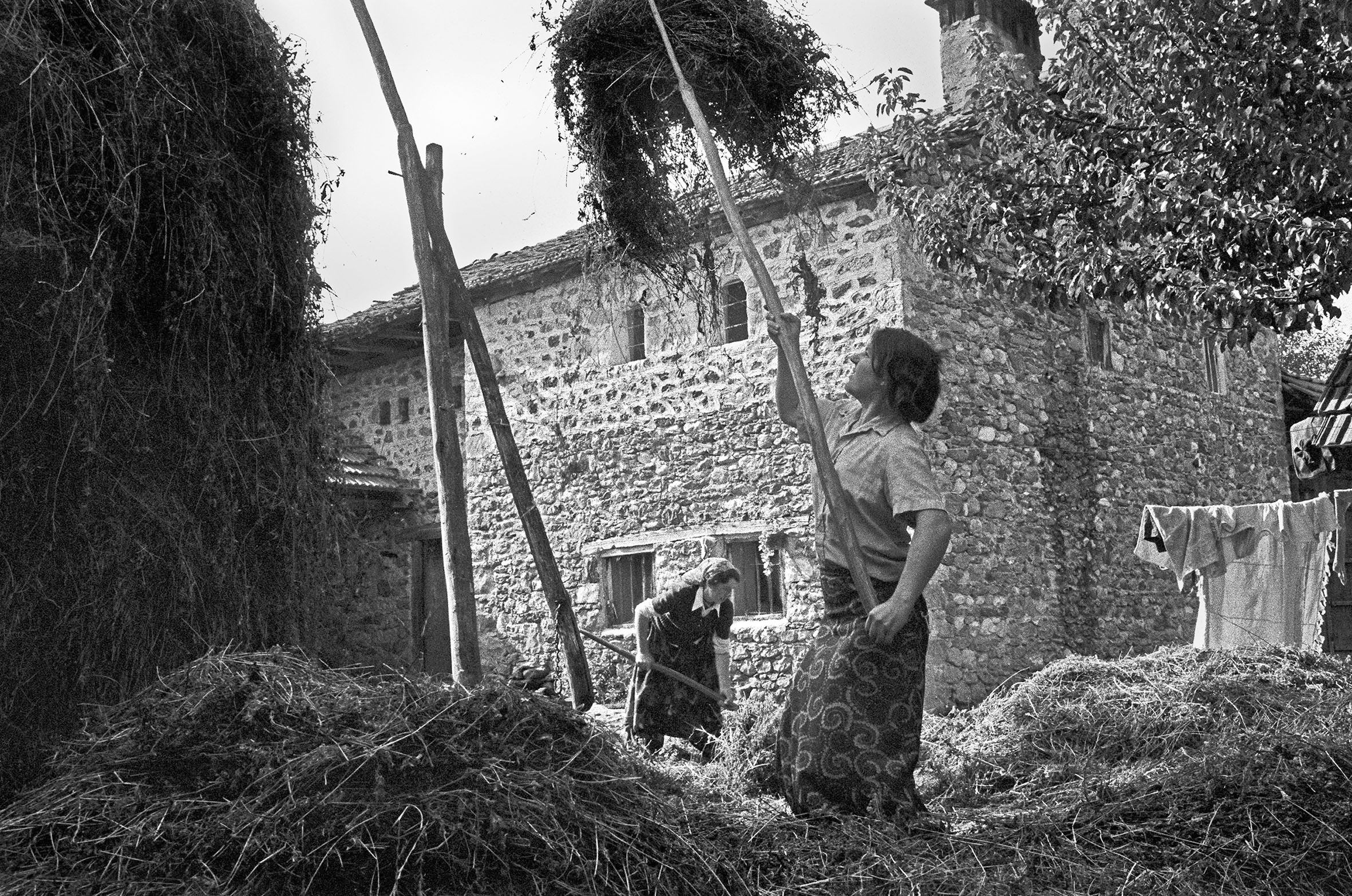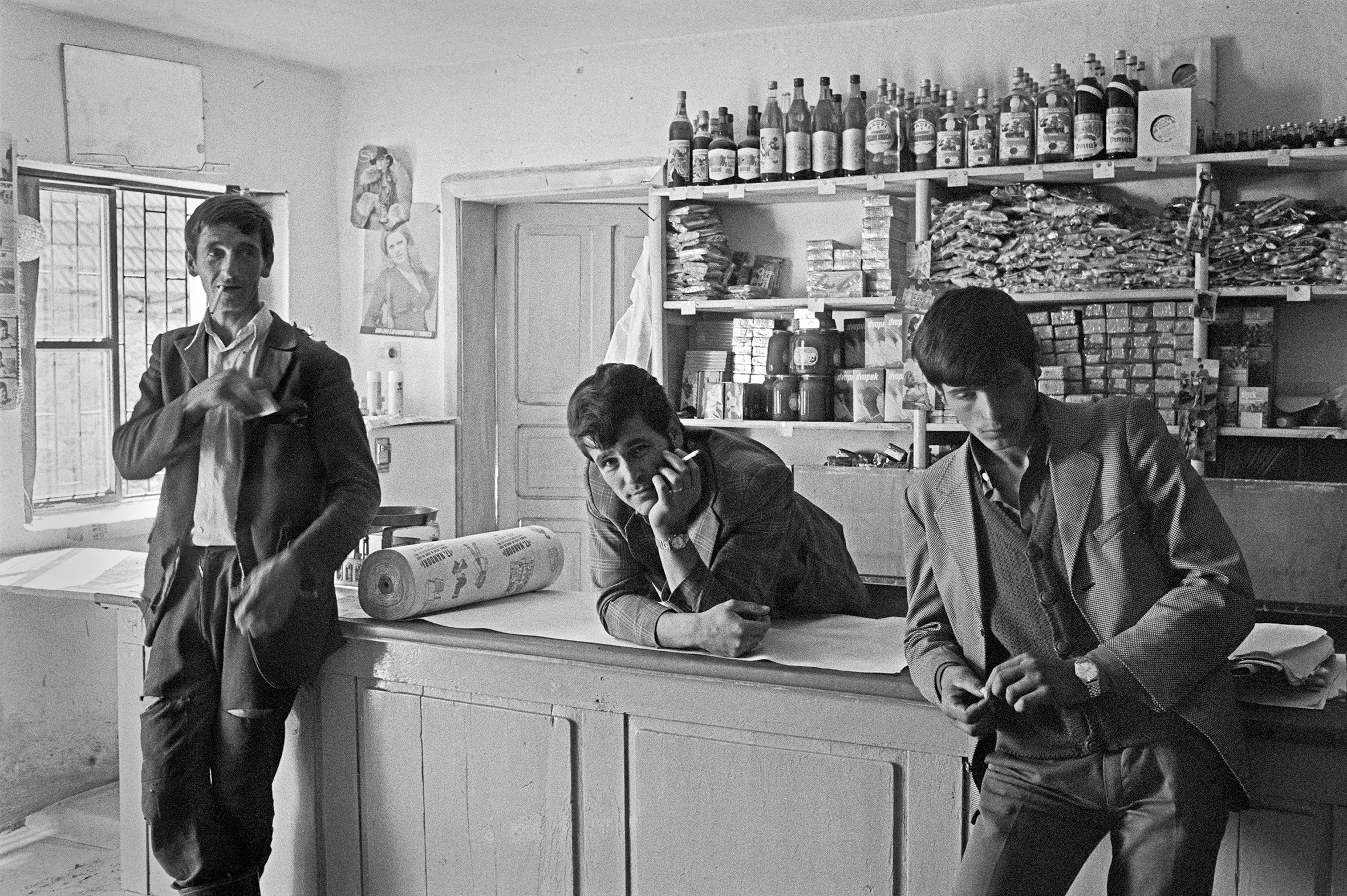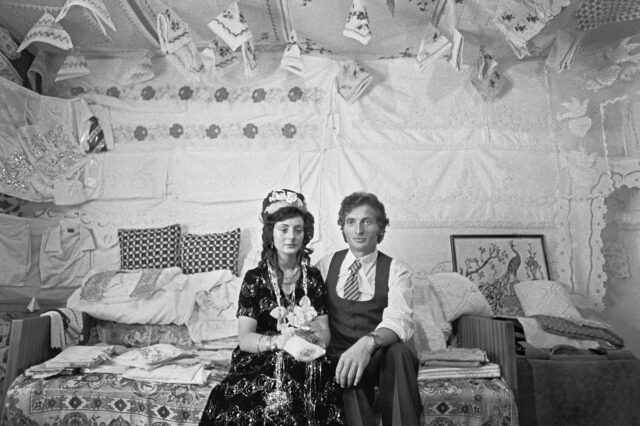By Anna Di Lellio
The book of Ann Christine Eek, Albanian Village Life. Isniq-Kosovo 1976 (Tira Books 2021) is not only a very beautiful collection of photographs recording a fading way of life which perhaps survives today only in small pockets of rural Kosova. It is a very moving portrayal of people, houses, and landscapes, seen through the eyes of a foreigner who no longer is a stranger to them. Ann Christine, a Swede, arrived in Kosova for the first time in 1976, the time that most Albanians consider the best years of their lives. She never left, not with her heart.
Isniq lies in one of the most beautiful parts of Kosova, by what are known as the Accursed Mountains, a border region touching Montenegro, Kosova, and Albania. The young Ann Christine found herself in Isniq on a study trip planned with her friend Berit Backer, the Norwegian anthropologist who was Berita for the many Albanians she later befriended as a scholar and human rights advocate. The two women lived in the village, interviewing and photographing people as they went on with their daily lives or engaged in special rituals. Kristina and Berita were observers, striving to understand a society they knew nothing of in a foreign language. Both women created works which describe, interpret, and show this society with no condescension or exoticizing emphasis.
Berita, murdered by a mentally ill Albanian refugee in Oslo thirty years ago, is present throughout Ann Christine’s book. She appears in photographs, a serious young woman sporting the big eyeglasses of the time, modest in her bearing and clothing. We can also hear her voice in the brief but pointed annotations that accompany the images to explain customs and culture. Her book, Behind Close Walls, remains one of the best English language treatments of family and community life in the Kosova highlands.
Ann Christine does not minimize the debt she owes to the friend and scholar so tragically and prematurely disappeared. On the contrary. However, it is her voice and her eyes that make this book so unusually captivating. Ann Christine takes us by the hand to peek into the lives of several families, and at the end we feel that we know them. She creates a gallery of characters that span all the multiple facets of the Albanian society in Kosova during the mid-70s, a time of relative calm and hope, but also dramatic changes.
It would be impossible not to be in awe of Ali Musë Murselaj (Ali Musa), at 94 the oldest man in Isniq in 1976, a legendary comrade of Isa Boletini, standing proud in front of the camera in his national costume. Ahmed Binak and Sylë Osdautaj, bookends to Dervish Rama Mehaj, young men in modern suits, holding a cigarette and leaning with a debonair attitude on the counter of Mehaj’s shop, suggest confidence, but if we pay closer attention, we notice one’s torn trousers and the downcast look of another; they were all temporarily out of work.
Sitting on their bed, somber and resolute as they should, according to tradition, the newlywed Osdautaj, Ismail Avdi and Nafije Makolli, are the picture of folk authenticity. They are framed by textiles on display everywhere, on the bed as on the walls, the same textiles that made the trousseau of the bride to last for her entire life. But the caption tells us that they will not live in that room or in that old house that looks like a fortress; their home is a newly built apartment in Prishtina, where they work.
We see life as it was for hundreds of years. Ajsha Shala is portrayed as she stacks hay, or chops wood, chores that women performed together with routine housework and care of the children. The women in Ann Christine’s book are always working. Even when visiting their husbands-shepherds in the mountains during the summer, if there is nothing else to do, they do handicrafts.
But we also see the changes that modernity has brought. Miradia, the daughter of Maliq and Nurie Tishukaj, went to nursing school even if that means breaking the besa of a marriage promise, returning the dowry to the groom’s family, and facing the ostracism and silence treatment of the village. Rural women still could not go out of their house without a chaperon, and certainly could not talk to men who did not belong in the same family, but Miradia, who lived in Peja and worked in the health center of Isniq, made the commute alone every day and talked to men freely. In the end, people embraced her as someone who cared about them.
Through her beautiful photos, Ann Christine recreates for a contemporary audience the excitement and ritualism of ceremonies that involve entire families and communities, whether weddings or funerals. Her intimate portrayals of parents with their babies, or joyful gatherings of children playing, give a glimpse of a peaceful life. But this is Kosova, and the peace is marked by violence.
Maliq Tishukaj, Miradia’s father, a partisan veteran who was fired from work when he refused to let his wife drop the veil as the communist party required but his wife dreaded, had died before Berit and Ann Christine could meet him, in 1969. His lungs had never recovered from the torture received in 1956, during Ranković’s campaign to collect weapons among Albanians.
The book brings back to life people who are no longer living. Hysen Tahirsylaj, portrayed as he worke din the fields and with his family, was killed in 1984 in a blood fued. Father and son, baba Osë Miftar and Sadri Osdautaj, were among the friends of the two women who did not make it through the 1998-1999 war. They stayed in their home instead than fleeing to Albania and couldn’t find peace for a while even after death. Osë did die on his bed, and Sadri could bury alone and in a rush, where Serbian troops later deployed mines. They could not give him a proper burial for years. Sadri was kidnapped from a hospital bed where he lied wounded and never seen again until 2007, when his skull was found in a mass grave with a bullet hole in the back.
Baba Osë lived in the most imposing kulla of Isniq and in the photos he looks authoritative, sitting by the oxhaku. If it wasn’t for the restoration of Cultural Heritage without Borders, that kulla would no longer exist. Neither would the kulla of the Kukleci. During the war, 70 of the 263 kulla in the area of Deçan were damaged or destroyed by Serbian troops. Ann Christine’s book reveals an intact landscape of high walls and fortified towers, with spacious oda inside.
(Photos from the book, courtesy of Ann Christine Eek – ©Ann Christine Eek – All rights reserved)


